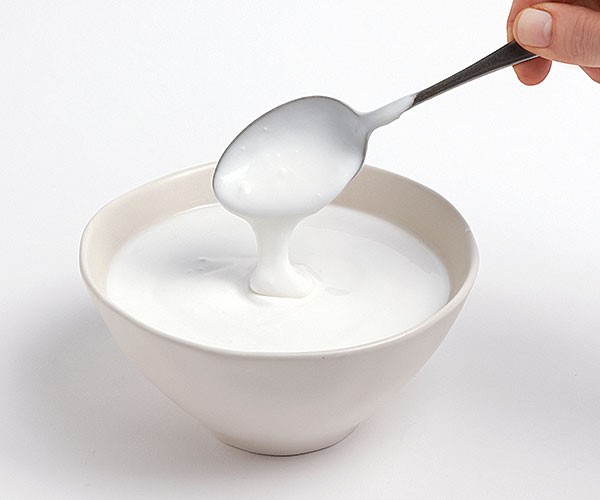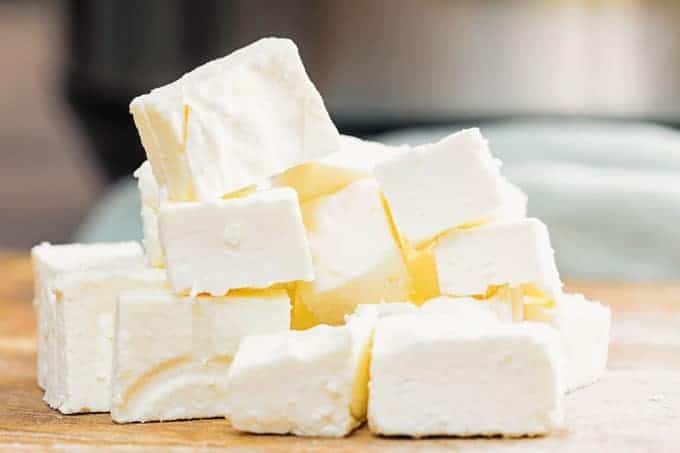1. DAHI
Dahi or curd is a semi-solid product, obtained from pasteurised or boiled milk by souring, using harmless lactic acid or other bacterial cultures. It is produced from heat-treated milk after inoculation with certain species of lactic acid bacteria added to milk in the form of starter culture. Lactic acid bacteria added multiply, grow and produce lactic acid, acetic acid, and carbon dioxide by utilizing lactose present in milk. Some bacteria use citric acid of milk to produce certain volatile organic compounds, mainly diacetyl, which is responsible for the flavour of Dahi. A judicious combination of acid-producing and flavour-producing microorganisms in the starter helps in the production of Dahi with a firm body and good flavour.

Dahi Processing Flow Chart (Traditional Method)
Raw milk (antibiotic –ve, protein: min 36%) 
Stored in multipurpose VAT 
Boil for 5 to 10 min 
Cooled to room temperature 
Added with previous day’s curd or buttermilk 
Stirred and allowed to set undisturbed for overnight 
Store at 4⁰-5⁰ C in Cold Store till despatch
2. YOGHURT
Yoghurt is a popular dairy product that is made by the bacterial fermentation of milk. The bacteria used to make yoghurt are called “yoghurt cultures,” which ferment lactose, the natural sugar found in milk. This process produces lactic acid, a substance that causes milk proteins to curdle, giving yoghurt its unique flavour and texture. Yoghurt can be made from all types of milk. Varieties made from skim milk are considered fat-free, whereas those made from whole milk are considered full-fat.

Yoghurt Processing Flow Chart
Selection of the raw material 
Standardization 
Homogenenization (100kg/Cm2@60⁰-70⁰ C) 
Heat Processing for 80⁰- 90⁰ C for 5-30 minutes 
Cooling for 42⁰- 45⁰ C 
Inoculation of Yoghurt Cultures S.thermophilis and L-delbruekus absp.bulgaricus @ 2% (V/V) of milk 
Incubation at the temperature 42⁰ C for 3-6 hours 
Cooling @ first stage @42⁰ to 20⁰ C and in the second stage 20⁰ to 5⁰ C 
Packaging 
Cold Storage
3. BUTTERMILK
Drinking buttermilk after churning Dahi into country butter is a very common practice in India. This product has most of the fermented milk solids except fat which goes in butter. It also has mixed lactic acid bacteria, especially Lactococci and Leucostocs, which gives it a typical diacetyl flavour. Manufacturing cultured buttermilk on an industrial scale involves the selection of good quality raw material, standard cultures, and an optimized process of fermentation, packaging, and storage. True buttermilk is the fluid remaining after the cream is churned into butter. If the butter is made from sweet cream, its buttermilk has approximately the same composition as skim milk. Cultured buttermilk is prepared by souring true buttermilk or more commonly, skim milk with a butter starter culture that produces a desirable flavour and aroma.

Buttermilk Processing Flow Chart
Selection of the raw material 
Standardization of milk 
Heat Processing for 85⁰ C for 30 minutes 
Cooling @ 22⁰-25⁰ C 
Inoculation of Mesophilic starter @ of 0.5 to 2% 
Incubation @21.6⁰ C 
Cooling less than 5⁰ C 
Packaging 
Cold Storage
3. PANEER
Paneer is a very common indigenous dairy product in the Indian subcontinent. It is similar to an unripen variety of soft cheese which is used in the preparation of a variety of culinary dishes and snacks. It is obtained by heat and acid coagulation of milk, entrapping almost all the fat, casein complexed with denatured whey proteins, and a portion of salt and lactose. Paneer is marbled white in appearance, having a firm, cohesive and spongy body with a close-knit texture and a sweetish-acidic-nutty flavour. Preparation of paneer using different types of milk and varied techniques results in wide variation in physicochemical, microbiological, and sensory quality of the product.

Paneer Processing Flow Chart
Milk Reception 
Filtration (to remove if any extraneous matter)
Standardization 
Standardization (Fat:SNF 1:1.65 using skim milk powder) Heating (85⁰ to 90⁰ C for 5 min)
Cooling (70⁰ to 75⁰ C)
Addition of coagulant (1% Citric acid solution) 
Continuous stirring till whey separates and hold for 10 min 
Draining of whey
Pressing the coagulum after filling in a muslin cloth 
Removal of blocks and cutting into the desired size 
Immerse the Paneer blocks in chilled water (4⁰ C)
Packaging and storage at 4⁰ C
((Content shared by Ms. Stephy Das, Consultant (Product Development), PMFME PMU, NIFTEM & Dr. Syed Mansha Rafiq, Assistant Professor, Dept of Food Science & Technology, NIFTEM)